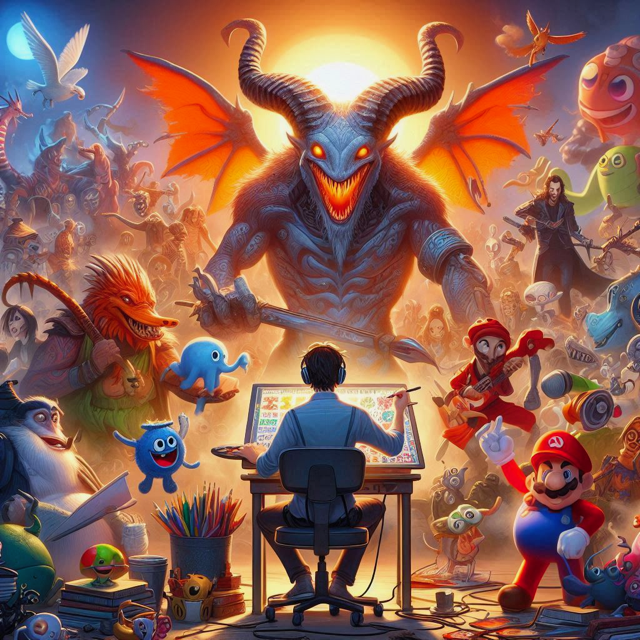
Gaming is big business. In 2022, the global market is estimated to be worth $220.79 billion (£193.23 billion) and is expected to more than double to $583.69 (£511 billion) by the end of the decade.
The industry has become dominated by giant publishers like Electronic Arts and Take-Two Interactive who have, over the years, gobbled up the smaller prey swimming around in this giant ocean.
There are some players who argue that video gaming has become too focused on the business aspects to the detriment of the gameplay itself. There are also some that sit on the outside looking in that look down on video gaming as a lesser form of storytelling and media when compared to literature, motion pictures, or music.
Although they may be coming at the argument from different directions, they are, essentially, making the same point – that video games are not really a form of artistic expression.
Is that fair? Probably not, let’s take a look at why.
Electronic “Arts”
When Electronic Arts was founded back in May 1982, the company described its programmers and designers as “software artists”. This was because Trip Hawkins, the company’s founder, believe that software was a form of art.
This early approach led to plenty of successes, such as Skate or Die!, John Madden Football (later Madden NFL), and F/A-18 Interceptor.
Telling a Story
In these and just about every other game released, the developers had few resources to work with, so had to get very creative with how they put together fun and exciting titles that also attempted to tell a story.
For example, Nintendo’s original Donkey Kong game features a plot that sees DK kidnap Mario’s girlfriend, forcing the mustachioed plumber to rescue her.
Sure, the mechanics were repetitive and the graphics primitive, but it was a story nonetheless. In a way, this is no different to restricting yourself to the syllable limits of a haiku or lack of visuals in a radio drama.
A Blank Canvas
Perhaps then, video games should be considered an interactive form of artistic expression, much like a theater performance with audience participation, or an art installation that requires interaction from the viewer to get the full benefit.
This makes video games of all kinds a blank canvas for their artists to tell almost any story.
This is, perhaps, seen best in online slot games. Competition is incredibly strong in the video slot space, with most online casinos running large free spin promotions to encourage players to choose them over a rival.
Developers also focus on creating unique slot games, taking inspiration from all sorts of places to tell stories about the Ancient Egyptians, the Aztecs, and space. The majority share many of the same features, but the different themes allow developers to show off their artistic skills in shaping a narrative with symbols, music, and cut scenes.

Multimedia
We have come to accept that music is art. We also agree that imagery is art. Many are also quite happy for artists to create installations that the rest of us can control in some way. Therefore, it seems unreasonable to say that a video game is not a form of artistic impression simply because it is new and/or interactive.
If anything, games are a much more immersive form of art since they put the player at the center of the action, giving them some control over the story’s path along the plot. That’s not to say players control the narrative completely, just that they are put in the driving site to decide how long it takes, and how to get there.
For example, Grand Theft Auto’s single-player mode contains a prescribed story with a set number of missions that you must complete. Each mission, and some of the other in-game events that occur as a result of your progress through them, tells a piece of this tale.
Players can choose when, and sometimes in what order to complete these tasks. If they prefer, they can work through them in sequence or intersperse attempts with gallivanting around the open-world map.
But in the end, no matter what choices they make, they still end up at the same destination, completing the same final mission.
So yes, video games are most certainly art. They tell a story and are made up of the same elements as other forms of artistic expression. They’re just more interactive and immersive.







